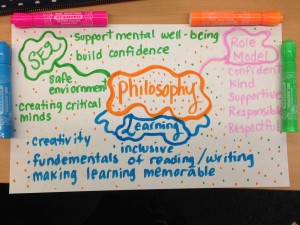When thinking of a school enviornment we generally think of a safe space that children learn and grow as individuals. Threats around the school community seem to be low unless the community is known for violence or is unsafe. What all schools may share in common, however, is threats from other students. It may be that a child does not want to come to school because he or she feels threatened by another peer. Not all of this information is shared regularly with parents and teachers or other adults so it can be an internal struggle that a child is dealing with.
This topic was bought forth to me this week during an important staff meeting at my practicum school. A grade 5 student who has a history of behavioural outbursts and issues was suspended after making derogatory, sexual threats to a female student. The staff at my school was bought together to discuss how to move forward with the inceident. We had our school counsellor present and also a behavioral specialist from the district. The main focus of the meeting was to inform the staff of the reprucssions of the student’s actions and to get everyone’s feedback to ensure a safer environment for students and staff. Some teachers strongly felt threatened and unsafe by this student’s previous behaviours and were really concerned about the safety of the other children. Their concern was around the school community as a whole.
The student had gone under some testing with the district but because of confidentiality I did not learn the diagnosis or the results of the testing. The district specialist and our district counsellor worked hard behind the scene in dealing with the student and his family. Some community members, especially the parents of students, often do not know how much work is done by the principal, counsellor and other district members to help the troubled student and the school. It is not unfamiliar to hear parents talking about how “nothing is being done” because they expect immediate answers for the student’s actions. I have learned through this staff meeting that it takes a long time to deal with a situation like this. It takes a lot of work to come to an agreement for what is best for the student, family and teachers.
There was conversation around what was said by the student and if teachers should debrief with the students who were around the situation when it happened, so that there is some teaching about what the meaning of the words is. I think it depends on the classroom environment, it does not have to revolve on what had been said but it can be around the whole issue itself. Often situations like these may be disturbing to other students who witness them and I definitely think that their feelings and thoughts around it should be addressed.
I learned a lot from this open discussion meeting. The staff really cared about the troubled student and wanted to help him but they were also looking out for the rest of the school community to ensure that his behaviours do not negatively affect anyone else. I really thought hard about what the student himself was going through at a time like this. How was he feeling about the situation? Is he able to return to school without being treated unfairly by the students and staff?
